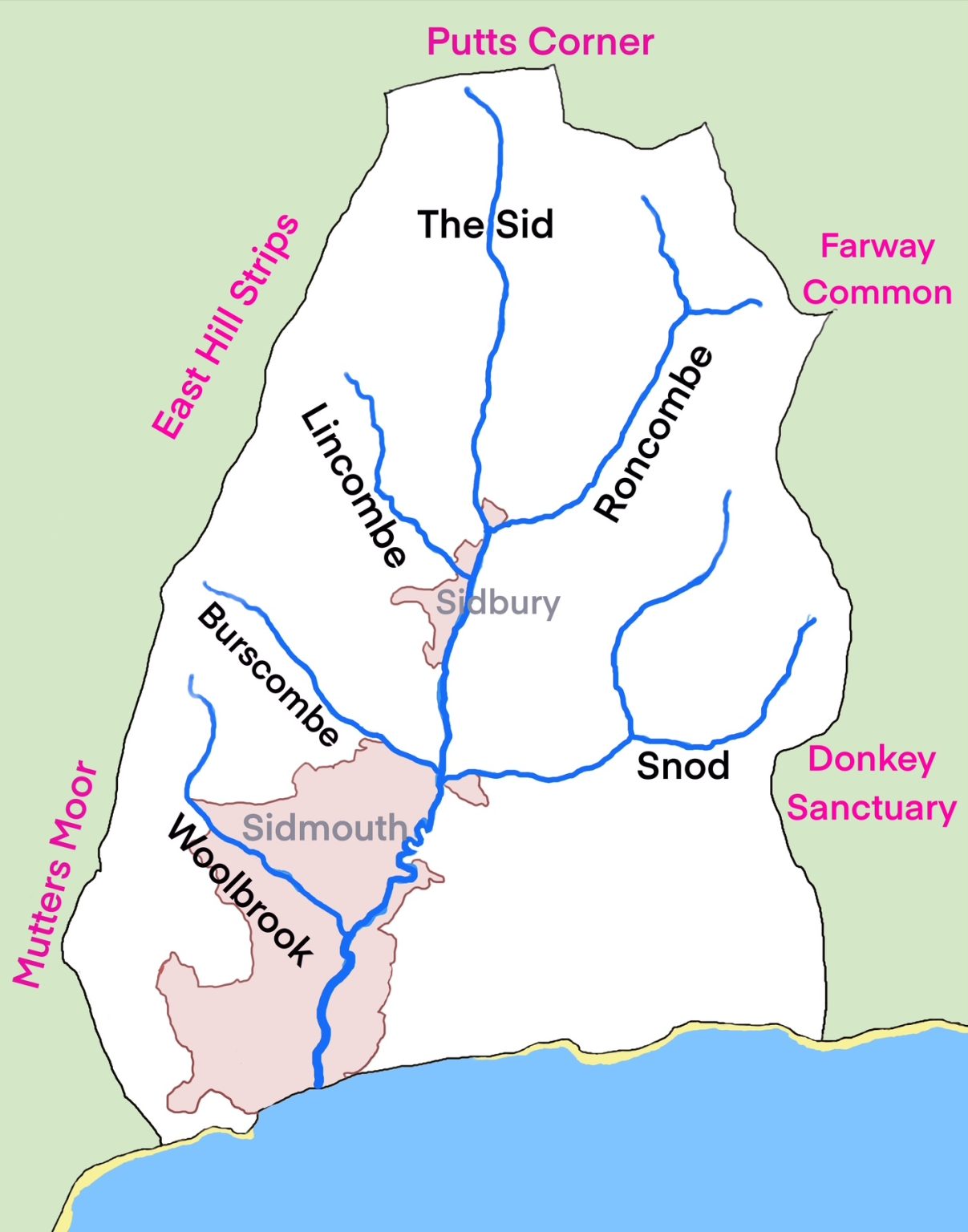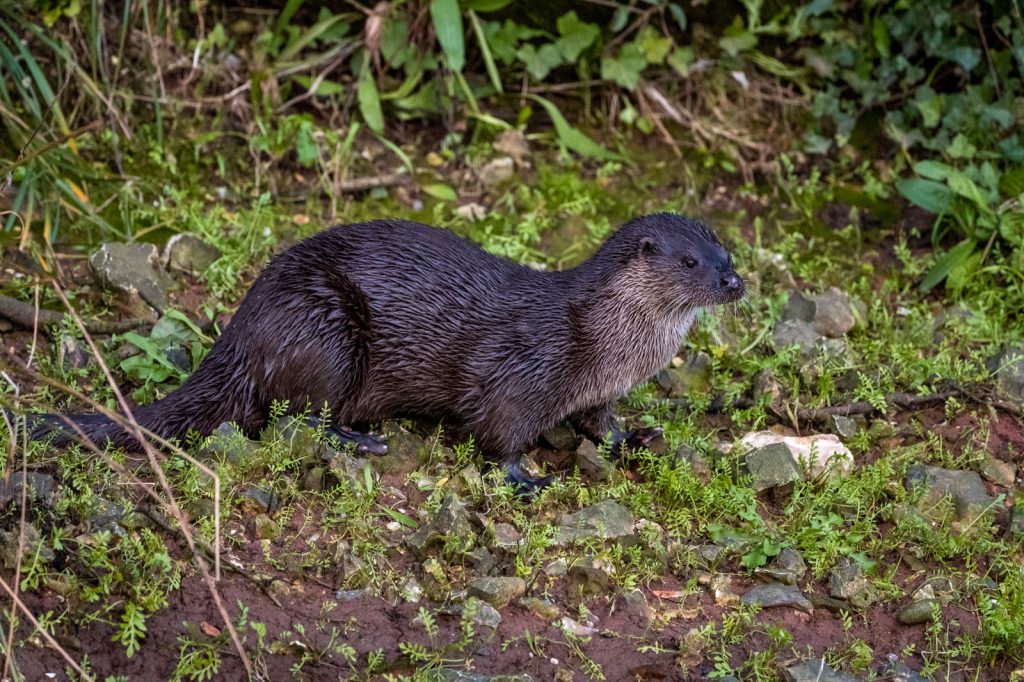The River Sid
About the River Sid
There is much to celebrate but human interventions have often created problems some of which we hope to address. In some sections, the Sid retains a number of natural characteristics where fallen trees enrich the diversity of in-river habitats and the banks are well vegetated and lined with willow and alder.
Upstream of Sidmouth, brown trout can breed in the abundant gravels. Invertebrates and fish in the river sustain dippers, kingfishers and otters which are found from the lower reaches into the headwaters. Improvement in fish numbers could support more wildlife.
Straightening the river had the unfortunate consequence of increasing its erosive power as the water moves more swiftly, which can be especially damaging after heavy rain, when river levels rise rapidly. The river is cutting down more deeply in these areas. Stones moved by the river add to erosion. These stones accumulate where the current is less powerful. They are regularly removed by the Environment Agency at Sidford and below School Weir.
Initiatives in the upper reaches and steeper slopesof the catchment, could slow the flow of run off after heavy rain, helping to reduce the river’s erosive power and slow the rate of soil loss from land surfaces and the riverside. Fencing by the river has helped to prevent livestock from degrading banks. There is considerable potential to improve the state of the river, together with protecting existing river life and habitats.
The General State of the River
This is determined by the nature of the land it drains, its geology, soils, the way the land is managed together with weather conditions and changes made to the river itself.
Urban Development
Sidmouth is built on the river’s flood plain and the river has been extensively modified. Urbanisation along the river banks, characterised by culverts, straightening and bank protection, leads to degradation of habitat; this is particularly evident on the Woolbrook and around the estuary.
We cannot turn back the clock but can nevertheless make changes beneficial to the river and it resident population of fish, plants and other animals.
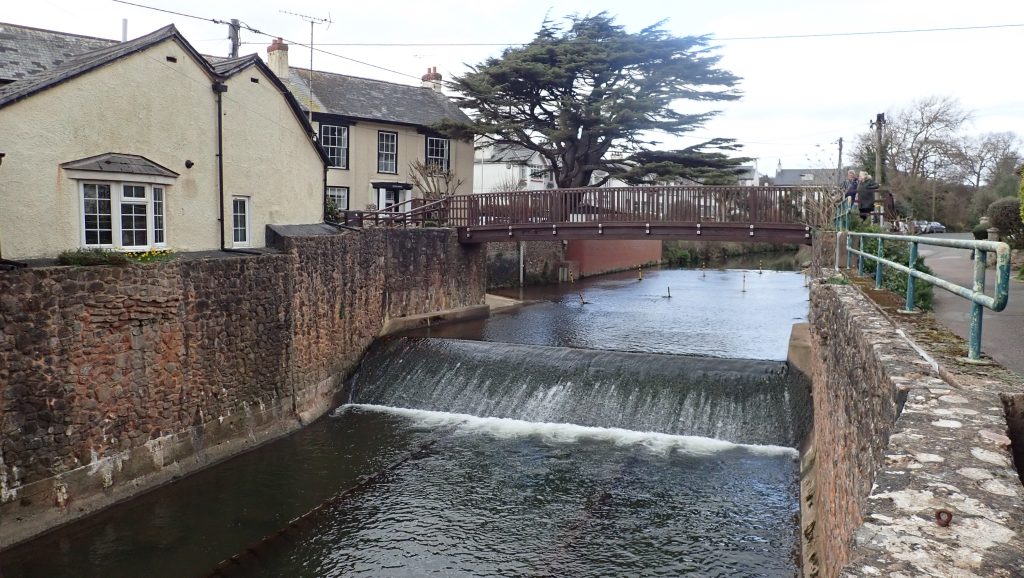
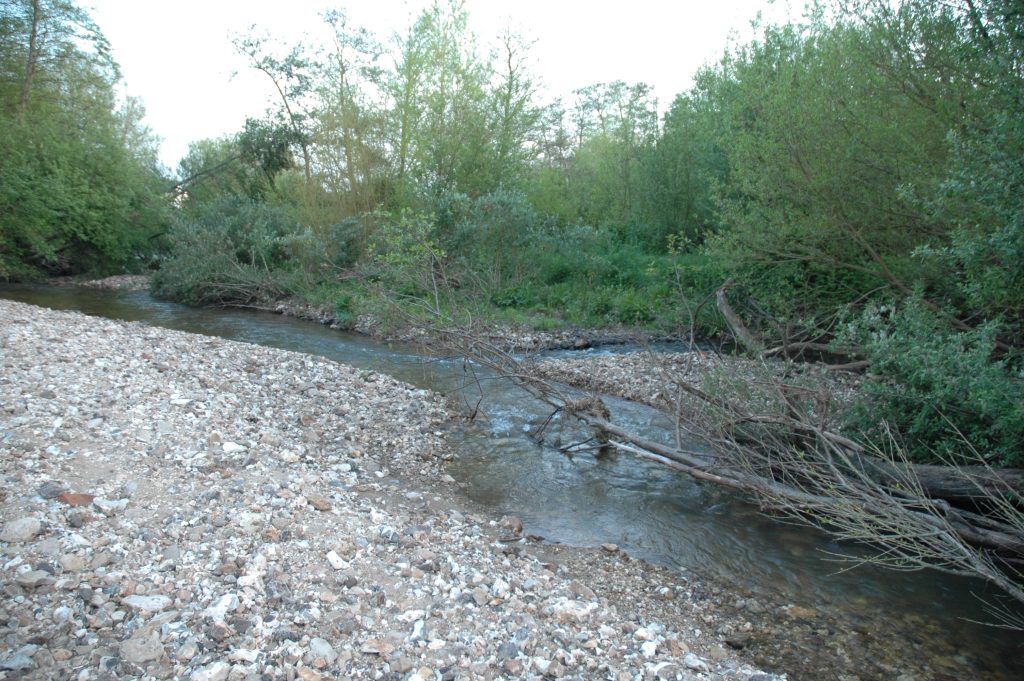
Rural Land Management
Coniferous forestry plantations and broadleaved woodland is mainly found in the upper reaches of the valley although there is a good spread of trees elsewhere including alongside the river providing shade, stabilising banks and supporting wildlife. Woodland areas and hedgerows in the upper valley help regulate water flow, reduce soil loss, improve water quality and provide wildlife corridors. Our tree cover is well above the national average.
Farming is largely pastoral with some arable fields. We are fortunate to have species rich meadowland, which supports abundant wildlife and is better to able to absorb and retain water. Soil run off and agri-chemicals can adversely affect river health. Well-managed farmland includes buffer strips, cover crops and hedgerows to trap nutrients before they reach the river. Good land management in the valley is reflected in sound water quality.
Wildlife
Relative to the national situation, the catchment is in generally good ecological condition, benefiting from a range of habitats and a reasonably healthy environment. The majority of the landscape is sensitively farmed and landowners are forward looking in their management practices.
- Fish species in the river include brown trout, bullhead, eels, brook lamprey, stone loach and minnows.
- River invertebrates are generally abundant and are sampled regularly using Riverfly monitoring.
- There are good populations of bird species wholly or partially reliant on the river, such as heron, kingfisher and dipper. Cormorants also visit the valley.
- There is favourable woodland habitat but invasive species such as Himalayan balsam and Japanese knotweed adversely impact river banks, native plants and wildlife.
- Numerous species of bat are recorded in the valley and otters breed successfully. At the time of writing (2025) there are no beavers in the catchment.
Rivers provide important wildlife corridors to a wide range of species.
Water Flow
In the headwaters, the tributaries fall rapidly. Within the first quarter of its length the Sid has fallen some 75% of its height. This steep gradient has provided useful flow for mills in the past and winter and spring rainfall was used to usefully flood the meadows.
However, with the sudden rainfall caused by climate change, high runoff causes watercourses to rise extremely quickly meaning flooding is an ever-present risk. The river has been known to increase its flow by up to 100 times in such events.
The nature of the landscape affects the passage of water from the watershed. Some water will percolate into the bedrock, some will stay within the soil layer and be released slowly but some runs off quickly over the ground surface and straight into the river system, particularly when the ground is already saturated or when the upper soil layer is very dry or compacted.
For more information on water flow, check out our work on Mapping Catchment Runoff
Our network of water courses will carry clean or polluted water depending on how the land is managed.
Road run off, garden chemicals, pesticides used for pet flea treatment, poorly managed septic tanks and agricultural chemicals are all potential pollutants. Our river is a living system reliant on clean water and should be protected where possible.
For example, the installation of drainage separators traps contaminants before they reach the river. The creation of buffer strips can separate agricultural land from the river. Is it really necessary to use garden chemicals? Dogs could be prevented from entering the river after flea treatment.
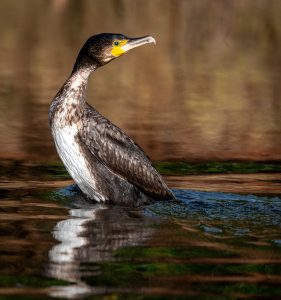
River Water Quality
Water quality describes the physical, chemical, and biological properties of river water. The water should nourish plants and animals ensuring that the river corridor sustains a wealth of wildlife and is enjoyed by all. Children should be able to play in the river safely.
Very broadly speaking our river quality is reasonable and the Environment Agency classifies the Sid as being of moderate ecological status.
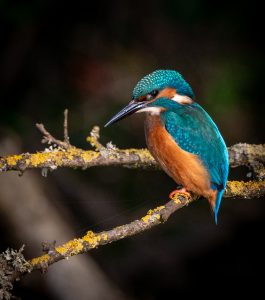
Untreated sewage is discharged into the Sid when the river is in spate to prevent the effluent backing up in people’s homes, but this is diluted with rainwater and quickly reaches the sea. There are eight discharge locations (Combined Sewer Overflows CSOs), from Sidford to the mouth of the Sid and one marine discharge one marine discharge. Summary discharges for the preceding year and real time alerts for all our CSOs can be found at https://theriverstrust.org/
Our sewage system functions best if only pee, poo, and paper are in the pipes; wet wipes and other sanitary products severely reduces its capacity and efficiency.
Clean well oxygenated water supports diverse aquatic but pollution can disrupt these delicate ecosystems, leading to a cascade of negative effects throughout the food web, impacting everything from tiny microorganisms to larger fish and animals that rely on the river for sustenance such as kingfishers and Otters.
Interactive Map
Use the interactive map below to find out more about our water quality testing sites, riverfly monitoring locations, and other related or notable sites within the valley.
Key
Droplets = Water Quality Testing Sites
Mayfly = Riverfly Monitoring Locations
Buildings = Sewage Treatment Works
Orange Circles = Combined Sewage Outlets
Fish = Electrofishing Sites
Challenges
These arise from the interaction between the natural topography, land use, including urban development, and man made changes to the river.
The Sid is a short steep river it drops from 200m to sea level in 10 km and the valley is steep and narrow along much of its length. These factors serve to create a river prone to flashy flows as water levels rapidly rise during intense rainfall. Such events damage wild life, increase erosion and soil loss and damage river banks.
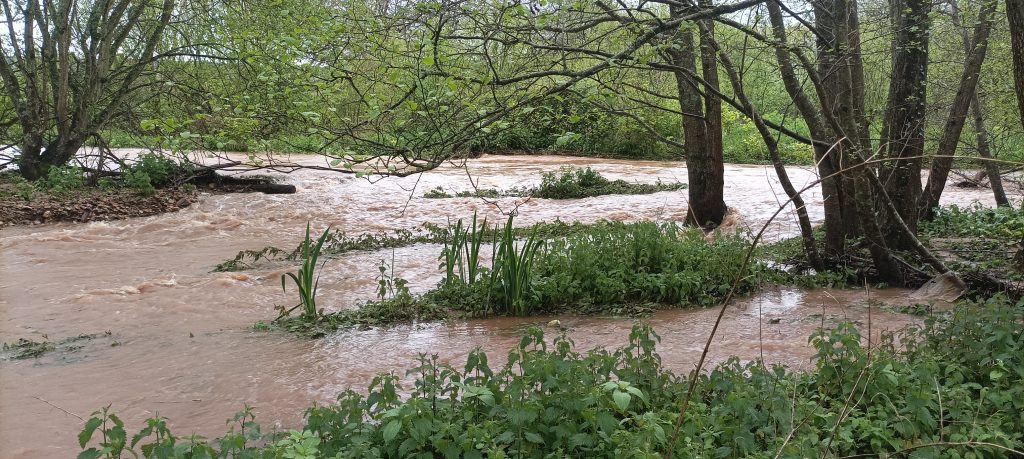
Climate change is expected to increase pressure on the catchment, with more extreme rainfall events and higher flood risks. In catchments across the country climate resilience is badly needed in order to manage both drought and flood.
High summer temperature and lack of rainfall causes pollutants in the water to become highly concentrated promoting the build up of algal growth both on the gravels and in the river itself, smothering aquatic plants, reducing both light levels and oxygen levels. We had such an event by the Ford in Sidmouth in early July 2024. A further reduction in pollutants reaching the river would help.
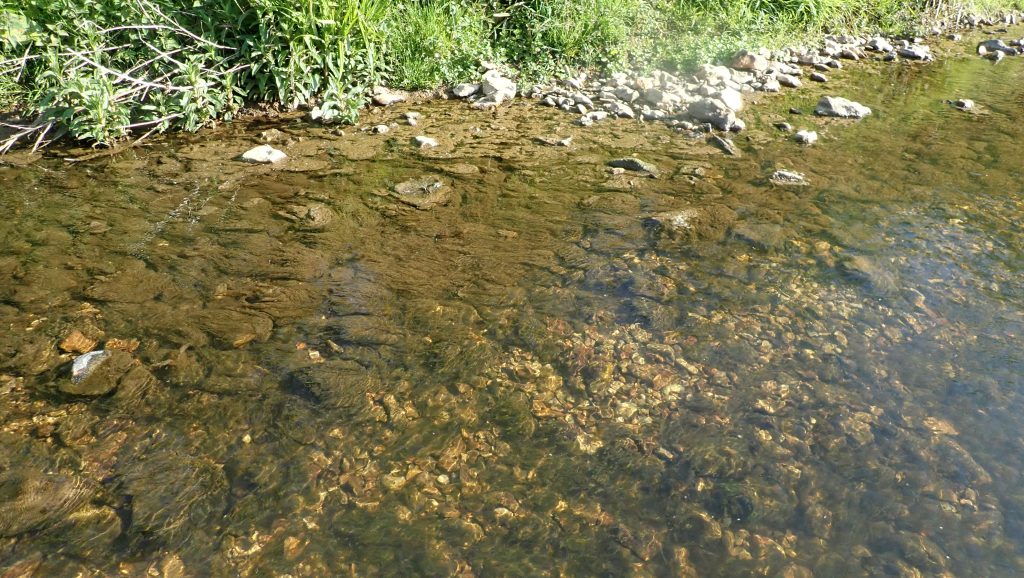
In the past we straightened rivers and drained water from the land as quickly as possibly. Both these factors enhance the rapid response to rainfall. Straightening the river further increases its erosive power and some weirs were added to slow the water down. The 3m School Weir near the mouth of the river is impassable for migrating species such as salmon, sea trout, eel and sea lamprey. As a result salmon have become locally extinct and brown trout populations are fragile. Water is impounded for some considerable distance behind the weir creating a more homogeneous and less desirable habitat for fish.
Attitudes to river management are changing, Nationally there has been extensive removal and modification of weirs, projects to reconnect rivers with their flood plains and other natural flood management schemes which include leaky dams and water retention ponds by the main river channel.
Our challenges are to modify our weirs enabling better fish passage, recreate improved natural habitat and slow the rate at which water reaches the river using a range of natural flood management initiatives. If, as a community, we can embrace change, these actions would improve the general state of our river for us and future generations.
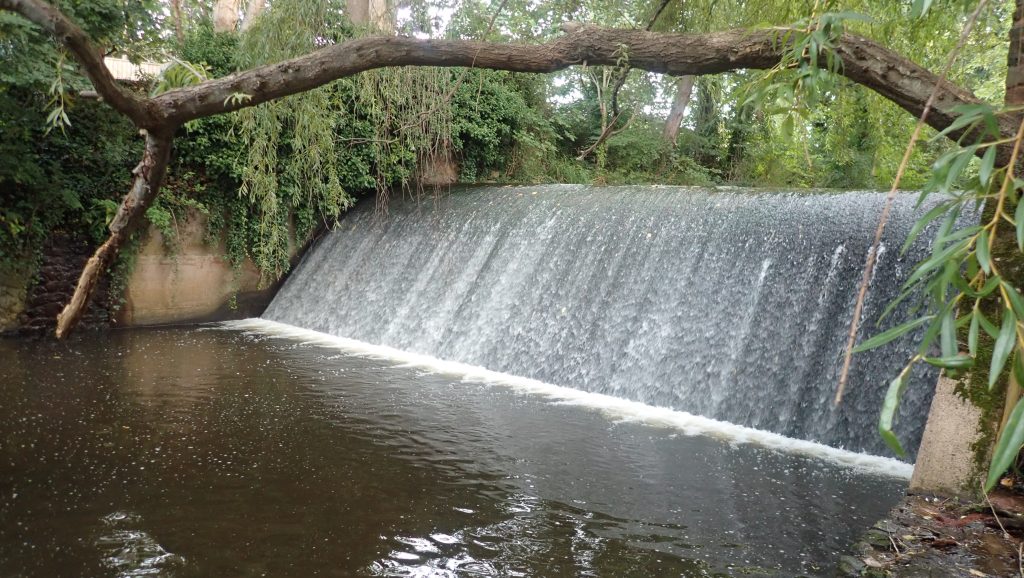
Newsletter
Subscribe to the newsletter to stay up to dates with the latest news along the River Sid,
including conservation work, volunteering opportunities, and useful information.

